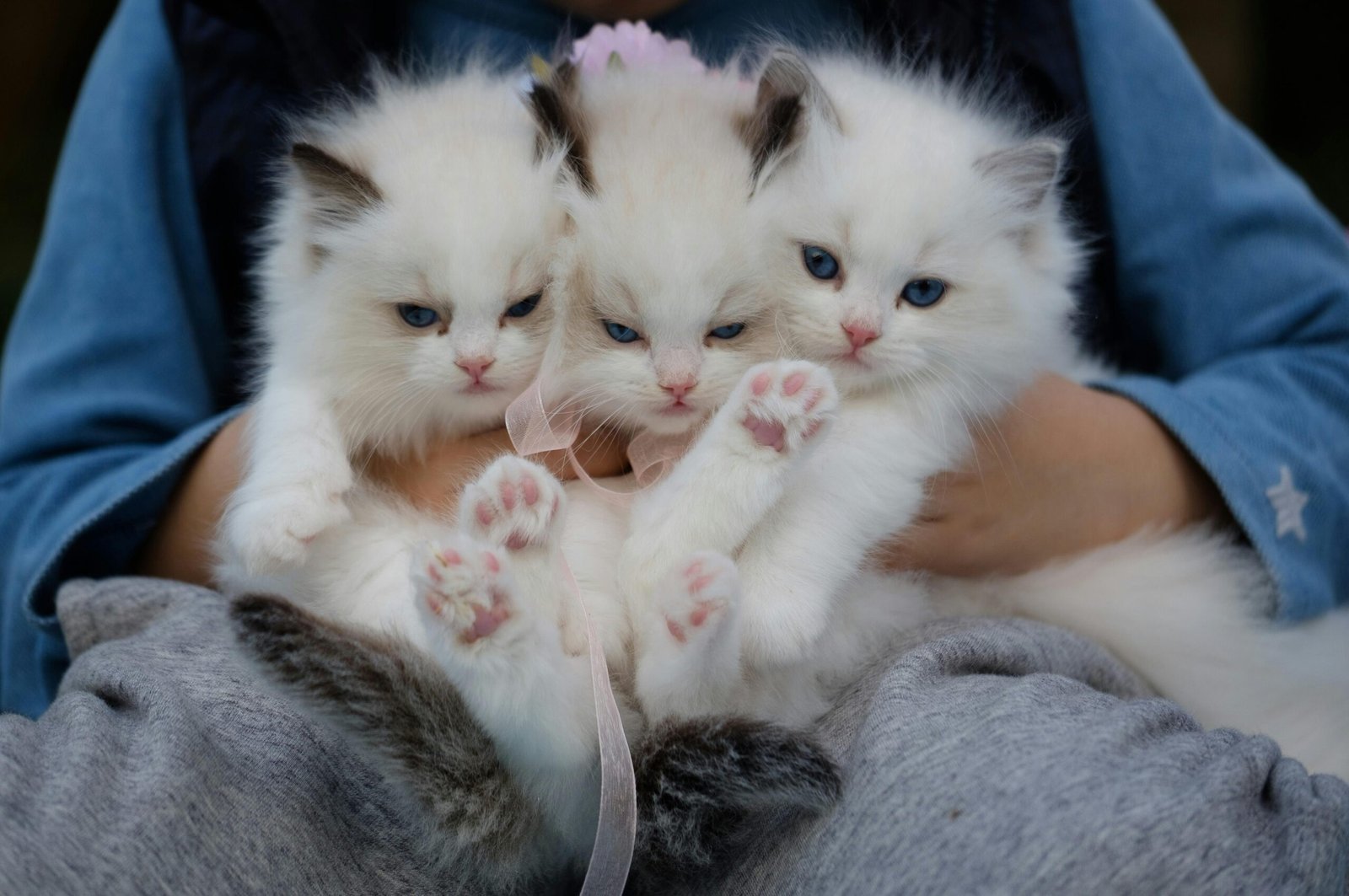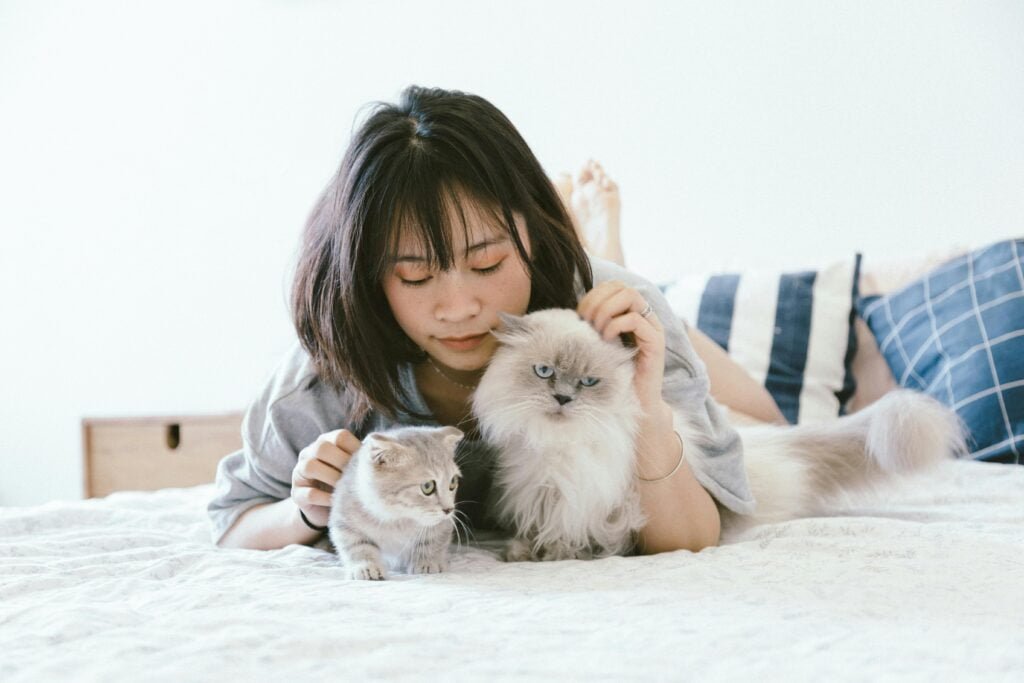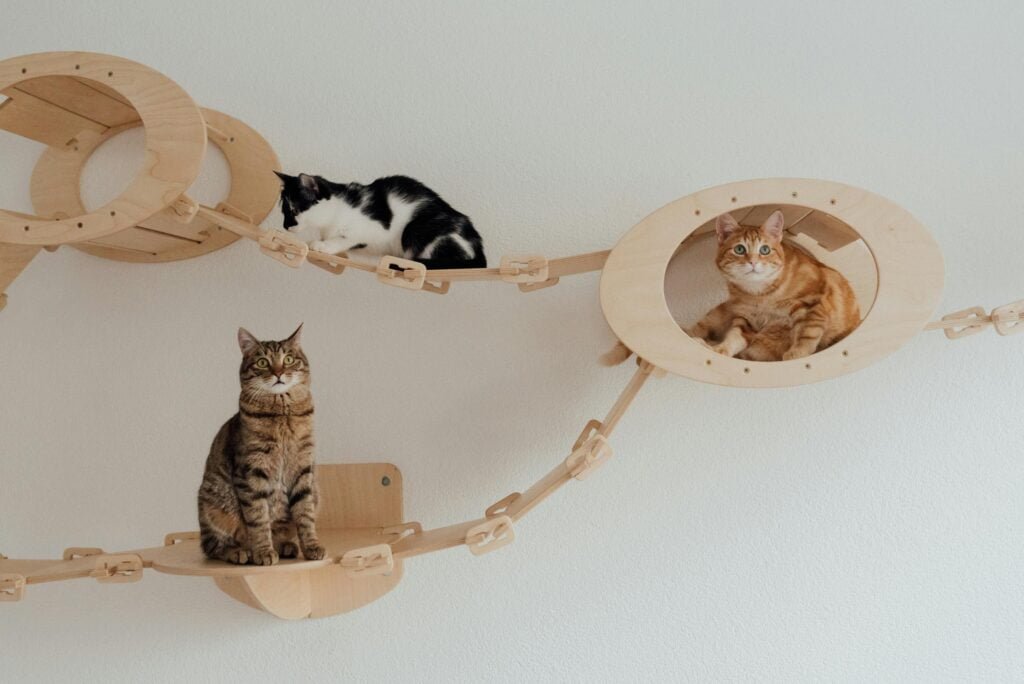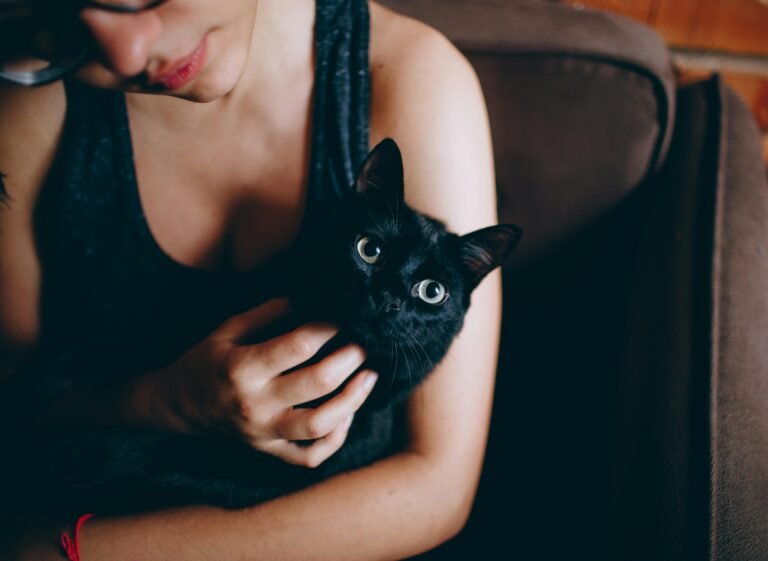
Do you believe in the idea of ‘more the merrier?’ Do you believe you deserve to be swamped by your fluffy cat babies at the end of a rough workday? Then a multi cat household is calling out to you.
Having multiple cat babies is a wonderful adventure filled with excitement and entertainment. But, it is not all fun and games.
Cats are famously individualistic and unique. You can not just keep them together in a multi cat household for your pleasure. You need to understand their temperament. Their needs and their dynamics with each other. Your home should be a space where each cat feels safe and loved. It would be best if you addressed the potential challenges and complexities that come with raising multiple cats. Only then will you have a happy, harmonious and thriving multi cat household.
Does that sound too serious? Don’t be alarmed.
We want to give you a realistic picture of how it will be to live in a multi cat household. We want to share all the details about it so that you are ready to ace any challenge that your cat babies throw at you.
Lets get you started on your multi cat household journey right here –
Why Should You Have a Multi Cat Household – The Benefits

A multi cat household is rewarding not only for the cate parents but also for the cats.
For the cat parents, seeing the goofy antics and quirky play of their cat babies is a wonderful experience. You will multiply the joy, laughter and happiness in your household. Caring for cats not only relieves stress but also gives you a sense of fulfillment and purpose.
Cats are social creatures. They enjoy interacting, playing, and wrestling with each other. Being able to cuddle makes the cats feel more comfortable and secure.
If you have a shy or anxious cat, they will benefit immensely from the company of other cats. Indoor cats are especially vulnerable to boredom and frustration. Having playmates will keep them entertained and prevent destructive behavior.
Challenges of a Multi Cat Household
A multi cat household comes with potential challenges along with amazing benefits. It would help if you gave due consideration to addressing these challenges before starting on your multi cat adventure.
Cats have a tendency to be territorial and compete with each other for ownership of water bowls, food, litter boxes etc. They might get aggressive when they have to share their perching spot on the shelf or sunny window sill with other cats. Whenever a new cat is introduced, there will be tensions and aggression as they struggle for their place in the hierarchy.
A multi cat household is more at risk of contagious diseases, so regular checkups and vaccinations are a must. Also, you have to spend extra time and effort in grooming and litter box maintenance to support the cat’s hygiene.
All of this can be a costly exercise and needs solid financial commitment for cat food, litter, and veterinary care. You might also feel stressed as you try to give individual attention to all your cat babies.
We are not sharing these challenges to deter you. Being well-informed can help you prepare well and overcome these challenges successfully. You can have the multi cat household of your dreams with minimal stress.
Enriching Your Multi-Cat Household

A stimulating environment that meets your cat’s needs for play, stimulation, and relaxation is the key to a harmonious home. When your cat babies have plenty of opportunities for exploration, it will prevent them from getting bored and acting out aggressively.
Interactive playtime with feather wads or laser pointers will help you spend time with your cats and make sure that they stay active. Puzzle feeders are also a great way of making meal times fun. Rotate their toys to keep them interested. You can further stimulate your cat’s senses with new scents by way of catnips or catnip sprays.
If you have cat trees and shelves at your home, it will meet your cat’s need to climb and perch. Similarly, scratching posts are a great stress reliever and will save your furniture. Quiet spots like cat beds and boxes for relaxation and retreat are a must for providing alone time to your kitty.
Health Considerations for a Multi Cat Household
Preventive care, hygiene, and grooming of your cats become even more important in a multi cat household. Because diseases are more easily spread among your pets –
- Keep the regular schedule of veterinary checkups and up to date vaccinations to prevent contagious diseases.
- Add regular deworming flea and tick prevention to the grooming regime to prevent parasite infestation.
- Sterilization or neutering your cats not only prevents unwanted litters but also protects against testicular cancer and uterine infections.
- Apart from brushing your cat’s teeth regularly, make sure to get professional dental cleanings at regular intervals.
- Give your cats a high quality diet and give opportunities for regular physical activity to prevent obesity.
How to Assess the Compatibility of Cats for Your Multi Cat Household

Each cat has a unique personality. You must assess the cat’s nature and needs before putting multiple felines together. Well-matched cats will make the adjustment easily, and soon, your multi cat household will be filled with harmony. Make a mistake in matching and you have an uphill battle.
Here are some pointers to help you choose compatible kitties for your multi cat household –
1. Temperament
Your cats’ temperament and personality determine how well they adjust with other cats in your household.
Social cat breeds like Siamese and Maine Coon have an outgoing nature and generally enjoy interacting with other cats. Solitary breeds like Russian blue and Scottish Fold are more preserved. So, you will have to be extra careful while adding them to your household.
Energetic and playful breeds like the Bengal cat and Abyssinians could overwhelm your kitties. Calm and easygoing breeds like Ragdolls and British shorthairs might be better suitable if you have laid-back cats.
Assertive and dominant cat breeds like the Sphynx and Oriental Shorthair often end up in conflicts and territorial disputes with other cats. At the same time, Burmese and Cornish Rex cats are more balanced and adaptable for a multi cat household.
2. Age
The age of your cat can be an important factor in deciding how well they can adjust to a multi cat household. Kittens from any friendly breed, like Siamese, are adaptable and will assimilate well with other cats. But, you must monitor and make sure that the kitten’s energy and activity are not overwhelming your older cats.
Adult cats, especially playful breeds like Sphynx and Abyssinian, will make a smooth transition into a multi-cat household. If your cats are a good match to their energy levels and activity levels, it will be a natural fit.
Senior or very old cats like Persian cats or British shorthairs will benefit from the company of an older cat. Kittens and young cats will overwhelm and exhaust them, leading to stress and conflicts.
3. Background
Your cat’s previous circumstances and experience can have a huge impact on their ability to adjust to other pets in the house. If the cat already has a positive experience in a multi-cat or multi-pet home, adjusting to the new set of friends will be a breeze. They are likely to be more tolerant and positive in their interactions.
If the new cat baby has experienced trauma or isolation, adjusting to a multi cat household will be tricky. It would help if you led with slow, careful, and closely monitored introductions. Make sure to provide a safe space where the cat will feel secure. Opt for a gradual integration process.
Adoption Tips: Guidance on Adopting Multiple Cats from Shelters or Breeders
Adoption is definitely a more emotionally satisfying way of finding your cat-mate. But if you are thinking of adopting a cat into your multi cat household, you need a little more preparation.
When you visit the cat shelter, spend some time observing the cats. Identify the cats that are curious and playful in their interactions with other cats. Avoid cats that are overly territorial and display aggressive behavior. Another interesting option is bonded pairs. These cats already have developed a stable relationship, and you can adopt them together.
Enquire the shelter for a trial perios to ensure that the new cat fits in with the other cats in your home. You can take this time to see how the cat adjusts to others. Then, make a decision based on your assessment. This option takes the pressure of immediate commitment off you.
Arranging a meet n greet between your potential cat baby and old timers can help you assess their compatibility. Please do not expect immediate friendship. They need to be curious and tolerant. Some amount of hissing and aggression is to be expected, but it should not lead to fights. You can always check with expert staff, like the vet, shelter staff etc, on the compatibility of different cats.
When you bring a new cat into your multi cat household, please don’t force them into the company of other cats. Set the cat up in a separate space and gradually introduce them to other kitties. The first step would be scent swapping using toys and towels. Then you can let the cat have supervised but short visits with other cats. Once the new and old ones are tolerant of each other, you can integrate them.
Common Multi Cat Household Myths Debunked

The moment you mention ‘multi cat household,’ you are going to get both positive and negative reactions. Some people might be skeptical, while others will be overly excited. While everyone speaks from their own experience, there sure are some myths about being a multi cat household. You can not escape hearing these. But don’t unquestioningly trust everything that you hear!
We are here to clear up the most common myths about multi cat household and put your mind at ease –
Myth 1: All the Cats in the Multi Cat Household Will Automatically Get Along
Every cat is unique, and it is not surprising to see some cats become instant friends. But, it is not always true.
Be prepared for the possibility that your cats are not going to bond instantly and become BFFs. Some cats are more social than others. You will have to create opportunities for them to interact. You have to plan the playtimes and socialization, keeping their unique personalities and individual needs in mind. Your kitties are going to get along – but it might not happen overnight.
Myth 2: You Only Need One Litter Box Per Cat Even in a Multi Cat Household
This one is a very popular myth, but there is no truth to it at all. Potty is a private business. Cats, especially, are very prickly about their litter boxes.
Dealing with litter box sharing and overcrowding can cause anxiety to your kitties. Your cats might also develop behavioral issues like litter box avoidance. The ideal number would be one litter box per cat plus one extra litter box. Make sure these are clean and accessible to all your furry friends.
Myth 3: Cats Are Solitary Creatures, so they Can’t Adjust Very Well to a Multi Cat Household
This myth is at the extreme end, just like the myth number one.
Just like humans, the personality of cats exists on a spectrum. So, making sweeping assumptions like this would be not very smart. Cats are generally social animals. Its true they love hanging out on their own on their sunny window sill. But, they do crave and enjoy the companionship and entertainment provided by fellow kitties. As long as your cat feels comfortable and secure, socialization should not be an issue at all.
Myth 4: Older Cats Can’t Adjust to New Cats in a Multi Cat Household
Older cats do not have the most stellar reputation in adjusting to change.
People often complain that their senior cats are too set in their ways. People assume that older cats can not make space for the energy and excitement of a younger cat. It might take a bit more time and a little more effort on your part. But you can help your older cats get along with your younger ones. So, don’t let this myth prevent you from adopting a senior kitty or adding a young furry friend to your older cat team.
So, don’t believe everything you hear about multi cat households. With the right preparation, you can make the setup work wonderfully.
Additional Tips and Tricks for a Harmonious Multi Cat Household
Being in a multi cat household definitely multiplies your joy. But, it is not entirely without challenges. You have to make adjustments to accommodate the personalities of every cat. This requires planning, creativity, and dedication on your part.
Don’t let the challenges of a multi cat household discourage you. We are here with some additional tips and tricks to make multi cat parenting fun and exciting –
1. Designated Play Areas
If your cats have a dedicated play area, it improves the quality of their socialization. If they play together, they can build better bonds. If you have enough space, consider converting a spare room into your cat’s playroom. Stock it with interactive toys that encourage team play. Vertical spaces, especially for perching, will help your cats to establish their own space. It will reduce conflicts between the cats.
2. Pheromone Diffusers
When the cats are relaxed and happy, they release a kind of chemicals known as Feline facial pheromones (F3). The pheromone diffusers mimic these natural chemicals and help to calm down the cats. Place your diffuser in a common area like the hall or a balcony where your cats regularly hang out. With regular use, you will see a reduction in stress and aggressive behavior among your kitties.
3. Train Your Cats
Cats are not as pliable for training as dogs. But, there are some cat behaviors that you can address through training. The simplest way of training your cat is by positive reinforcement. Praise your cat, pet it, or offer treats when they are behaving well. It will motivate the cats to repeat the desirable behavior. Clicker training for basic commands is also useful for breaking up fights and stopping aggressive behavior. Another interesting idea is to teach the cat to respond to their name.
The Bottom Line on Multi Cat Households
A multi cat household is not just a romantic idea. More cats do bring more fun and more joy. But it also increases your responsibility as a cat parent.
Preparation, paying attention to individual needs, and patience are key here. It would help if you also took care to observe your cats in action and adjust your care as their needs change in a multi cat household.
If you are planning to add to your feline family, we hope our guide has helped you make up your mind.
Now go and create the purr-fact multi cat household for your bundles of joy.


